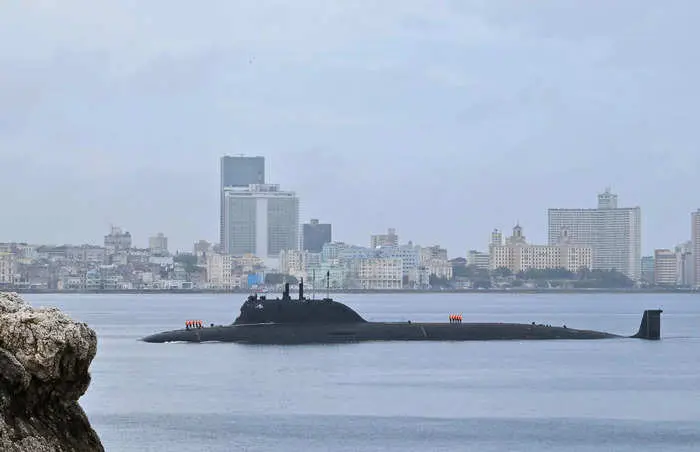The Russian submarine Kazan, part of a new class of nuclear-powered cruise missile submarines, recently made headlines by arriving off the coast of Cuba. This development has stirred significant concern among US and NATO military officials due to the submarine’s advanced stealth and strike capabilities.
The Kazan, accompanied by other Russian naval vessels, arrived in Havana’s harbor on June 12, 2024, marking the beginning of a five-day official visit before engaging in military exercises in the Caribbean.
Advanced Russian Submarine Arrives in Cuba
The Kazan, a formidable Yasen-M class submarine, has long been a source of anxiety for Western military forces. This class of submarines, developed by Russia during the Cold War, has seen several iterations, with the Kazan representing the latest and most advanced version.
Its design features a quieter nuclear reactor and enhanced capabilities, making it significantly harder to detect and track.
Strengthening Military Ties and Demonstrating Power
The arrival of the Kazan and other Russian naval vessels, including the Admiral Gorshkov frigate equipped with Zircon hypersonic missiles, is part of a broader strategy to strengthen Russia-Cuba ties and project military power in the region.
This deployment comes ahead of simultaneous air and maritime exercises in the Caribbean, the first such exercises since 2019.
While US officials have stated they are monitoring the situation and do not anticipate any immediate threat, the presence of these advanced vessels underscores the strategic challenges posed by Russia’s modernized navy.
Evolution of the Yasen-Class Submarines
The Yasen-class submarines, like the Kazan, have evolved significantly since the first of their kind, the Severodvinsk, was commissioned in 2013.
The Kazan is the first of the upgraded Yasen-M class, featuring a smaller and quieter design. These submarines are armed with a variety of missiles, including Oniks and Kalibr cruise missiles, and are expected to be equipped with the new Zircon missiles in the future.
According to the source, their capability to carry out both anti-ship and land attack missions makes them a versatile and potent threat.
Strategic Implications for the US and NATO
US and NATO officials have repeatedly expressed concern over the capabilities of the Yasen-M class submarines. In 2021, US Air Force Gen.
Glen VanHerck highlighted the strategic threat posed by these vessels, noting their ability to operate undetected within the cruise-missile range of US coastlines. This capability allows them to threaten critical infrastructure during a crisis, emphasizing the need for heightened vigilance and preparedness.
Routine Deployments and Strategic Posturing
Despite the advanced nature of the vessels involved, US officials have pointed out that Russian naval visits to Cuba are not a new phenomenon. Russian ships have been making annual visits to Cuba since 2013, and the upcoming exercises are part of routine military activities.
However, the presence of Kazan and Admiral Gorshkov in this deployment, both equipped with cutting-edge weaponry, marks a notable escalation in the show of force.
Conclusion
The arrival of the Kazan off the coast of Cuba has heightened tensions and underscored the ongoing strategic competition between Russia and the West.
As Russia continues to modernize its naval capabilities, the US and NATO must remain vigilant and adaptive to counter the evolving threat landscape. The presence of these advanced submarines in the Caribbean serves as a stark reminder of the need for robust defense measures and international cooperation.
Read more news:
